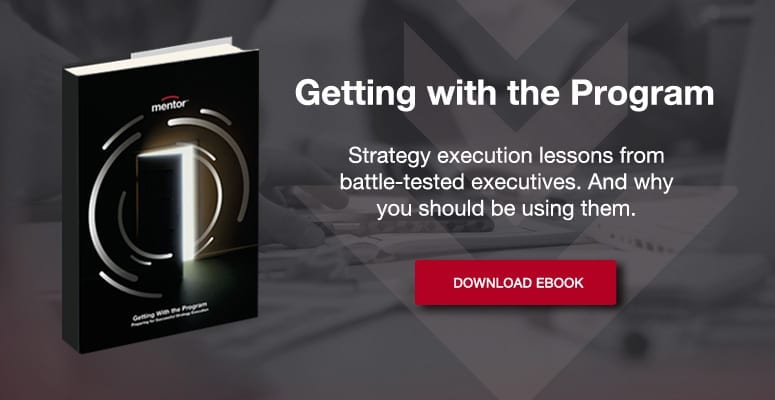Belief bias and business-critical programs
This week we’ll share an experience with you, from way back, where a client was loath to come clean to his stakeholders about the state of a business-critical program.
The company was StarFibre – not its real name – that’s not important. But its program plan was seriously flawed and ‘bad news’ was going to emerge sooner or later.
StarFibre’s high-profile client, its shareholders and the main board would all soon experience various levels of distress because the program was nosediving. It had all the makings of a PR disaster.
But ‘saving face’ was more important to the executive team – even if it meant putting the inescapable on the back burner for a time.
The program had already been running for over two years when we were asked to help StarFibre bring things back on track. A tall order, since program completion was ‘supposed’ to be only a few short months away.
We quickly realised what was staring everyone in the face. The emperor had no clothes.
The end date was blown and the only sensible option was to construct a new plan and renegotiate the contract with the client – who somehow seemed ignorant of the mayhem going on in StarFibre for many months.
One of Mentor’s most popular services with clients is our Independent Program Review. We run lots of them every year. They normally run for 4-6 weeks, depending on the size and criticality of the program.
In reality, it’s a program ‘health check’ – a rapid assessment of a business-critical program’s condition.
Our initial view was that, at that late stage, an ‘Independent Program Review’ would be a waste of everyone’s time. It would only confirm what we all knew – how deep the trouble on the StarFibre program was.
So, rather than put a team together to work at the clients site, we agreed with the CEO to do some desk research using StarFibre’s own data to confirm our hunches about the program.
It took weeks to get the data we asked for. Always a bad sign.
But when it did arrive we were able to quickly build a picture of the battle zone.
Armed with this, we then met with some of StarFibre’s key people and the letter below is a copy of a letter I sent to the CEO.
“Dear James
At the end of our call last week, you asked for my educated view on whether September this year was a sustainable completion date for StarFibre’s program.
Reflecting back on my talks with your Program Director, Richard, we don’t believe September is achievable. Let me explain why.
Let’s start with where the program actually is.
Using StarFibre’s own metrics, completion could not be achieved until Q3 the year after next – a delay of 29 months.
Even this date is based on three key assumptions:
- Trenching and Ducting continues at the same average pace as for the last three quarters – approximately 762 km/per quarter.
- Fibre implementation completion trails 4 months behind Trenching and Ducting.
- Acceptance testing lags 2 months behind Fibre Implementation.
You are closer to it than we are and in a better position to judge. But I imagine many of the easiest route sections have already been completed. Closing the more difficult sections takes longer.
Richard says he expects StarFibre to be granted a 4-month extension due to Force Majeure events. If your client agrees, this means a new contract completion date of September this year. Richard says he’s confident of hitting this date.
But let’s pause – and look at some of the practicalities here.
To reach September this year, Trenching and Ducting program production needs to accelerate more than fourfold for Q2 and Q3.
This means stepping up from your last 3 quarters average of approximately 762 Kms to 2900 Kms for Q2 and Q3 this year.
The knock-on effect also means fibre implementation – and acceptance testing – must be completed effectively in parallel with the Trenching and Ducting program.
More significantly, the timetable takes for granted that all StarFibre’s current problems will be magically solved ‘tomorrow.’
Increasing resources on the program will help to increase production. But the demand is so large in such a short timescale, improvements like these are improbable.
In my view, it would be better to critically review what can be achieved – based on credible assumptions – rather than the heroic assumptions that are in place today. StarFibre could then construct a recovery plan that everyone is confident in.
At present, the September “plan” is based on a set of superhuman assumptions that smack of ‘drive-by management.’
There’s little point in Mentor submitting a proposal to StarFibre, if September remains the target. StarFibre will never recover its original plan. Program deadlines cannot be wished into place.
Mentor could help StarFibre to construct a “recovery plan” that has credibility with your own team – and with your client. But this presupposes recognition that the current “September plan” is unworkable.
James, please forgive the bluntness of this note – but I truly believe that putting a recovery plan together now, based on solid metrics, is a far better option than waiting until it’s clear to your client that September is out of reach.
Let’s talk again on Friday and work out what options are worth going for. We would be keen to help.
Warm regards
David”
What do you think the CEO did? He decided to bluff it out with the client and keep up the pretence.
The lesson for Mentor was simple. It’s always better to walk away from a fantasy rather than risk taking part in a certain fiasco.


